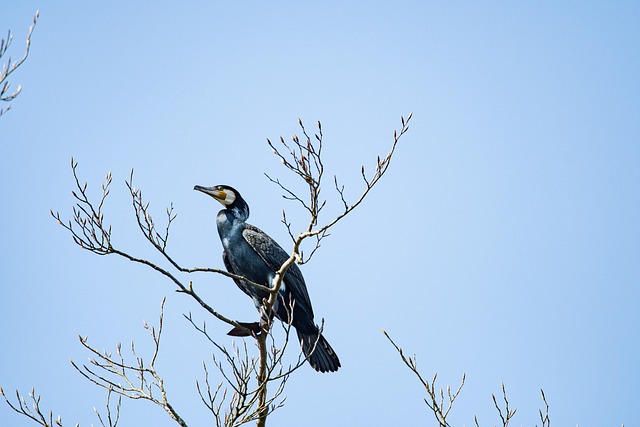
Cormorants: The Graceful Hunters of the Nature
Cormorants: The Graceful Hunters of Nature
When we think of nature’s hunters, images of fierce felines or swift raptors often come to mind. However, the cormorant, a remarkable water bird, embodies a different kind of elegance and skill. These birds are a testament to the beauty and complexity of wildlife around us, particularly in aquatic ecosystems. As they dive effortlessly into the shimmering depths, cormorants remind us of the intricate balance of nature, and the vital role that each creature plays within it.
Cormorants are known for their sleek, elongated bodies, adorned with dark plumage that glistens like polished obsidian under the sun. With their striking appearance and impressive fishing abilities, these birds have captivated the hearts of nature lovers and casual observers alike. What makes them particularly fascinating is their unique method of hunting. Unlike many birds that catch their prey from the air, cormorants dive underwater, propelling themselves with their powerful webbed feet to chase after fish. This underwater ballet showcases both their agility and grace, offering a breathtaking spectacle for anyone lucky enough to witness it.
Their hunting techniques are not only impressive but also demonstrate a profound connection to their environment. As they soar over lakes and rivers, cormorants serve as indicators of ecosystem health, signifying the presence of fish populations and clean waters. In this way, they act as guardians of nature, playing a crucial role in maintaining ecological balance. Observing these birds in their natural habitat can reignite our appreciation for the delicate interdependence of life forms.
Cormorants are also highly social creatures, often seen in groups or colonies, perched on rocky outcrops or waterfronts. Their communal nesting behavior fosters a sense of camaraderie, revealing the intricate social structures that exist in the avian world. This aspect of cormorant life resonates with human experiences—we too thrive in community and share the joys and challenges of life with others. Watching cormorants interact offers a humbling reminder of our shared existence on this planet and the importance of safeguarding the habitats that allow such relationships to flourish.
Moreover, the adaptability of the cormorant to various environments—from coastal regions to freshwater lakes—illustrates nature’s resilience. These birds can often be seen drying their wings after a successful fishing expedition, displaying a remarkable ability to thrive in diverse ecosystems. This adaptability is crucial as our planet faces environmental changes, reminding us of the importance of conservation efforts to protect the beautiful creatures that share our world.
As we continue to explore the wonders of the animal kingdom, let us take a moment to appreciate the stunning cormorant. Their grace and efficiency as hunters not only showcase nature’s artistry but also invite us to reflect on the interconnectedness of all living beings. In our journey through life, we can draw inspiration from these remarkable birds, embracing the beauty of our surroundings and nurturing the bonds that uniting us with the world around us.
So the next time you find yourself near a body of water, take a moment to watch for the graceful silhouette of a cormorant. Let their presence remind you of the wild wonders that abound in nature, and the essential role we all play in protecting our planet’s diverse ecosystems.


